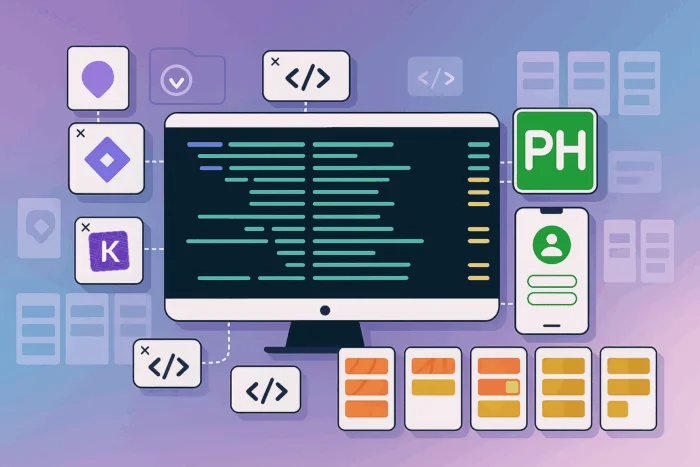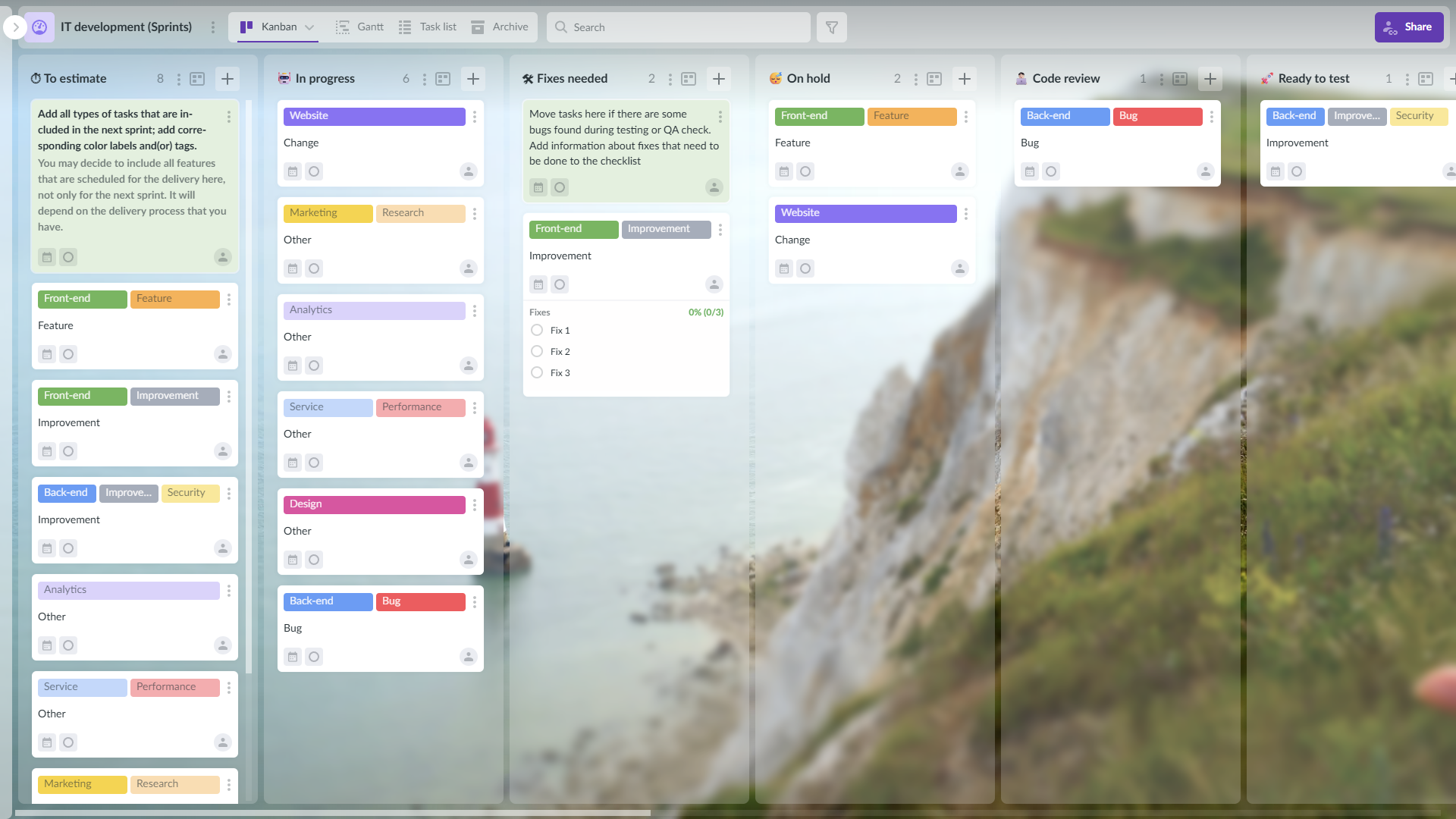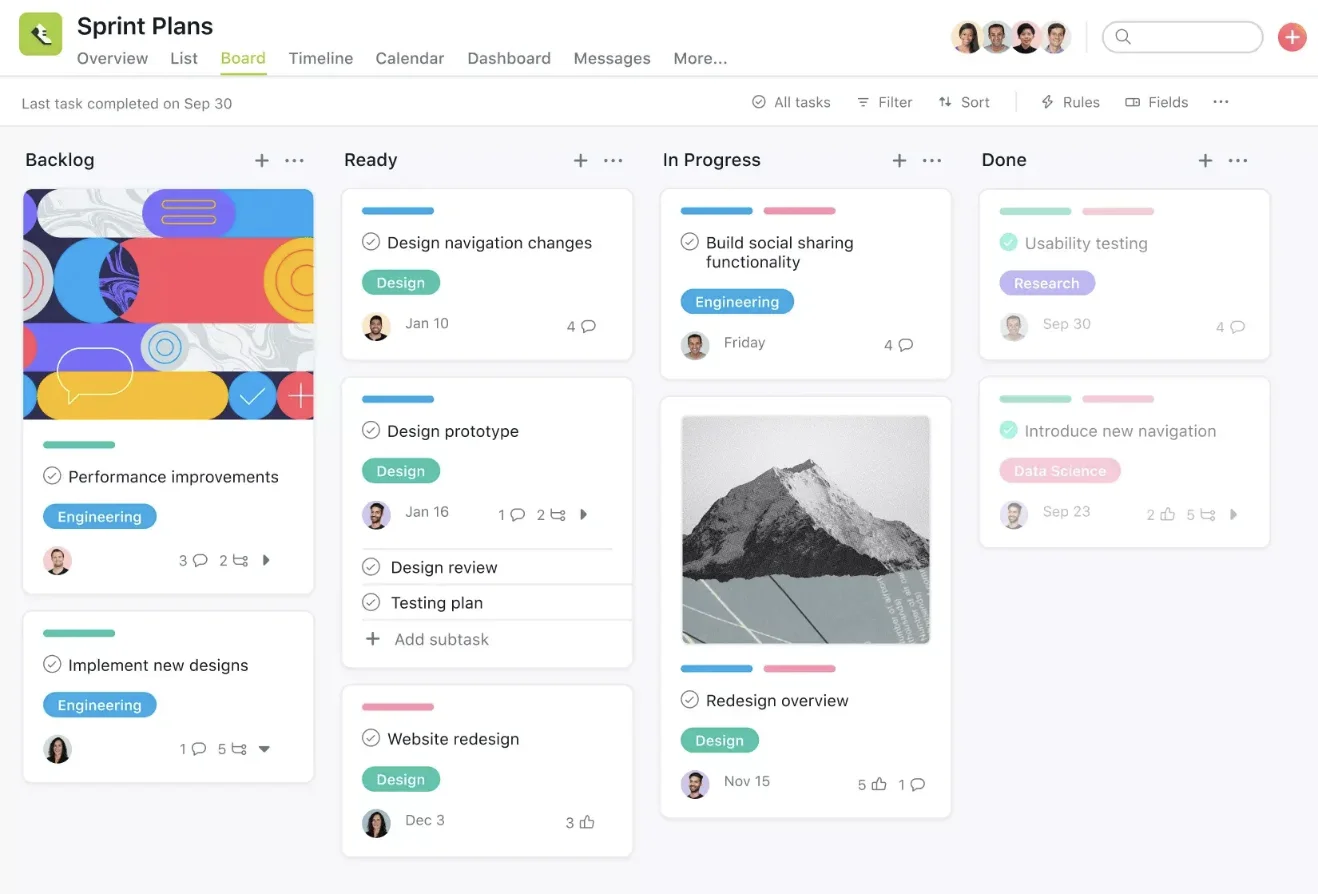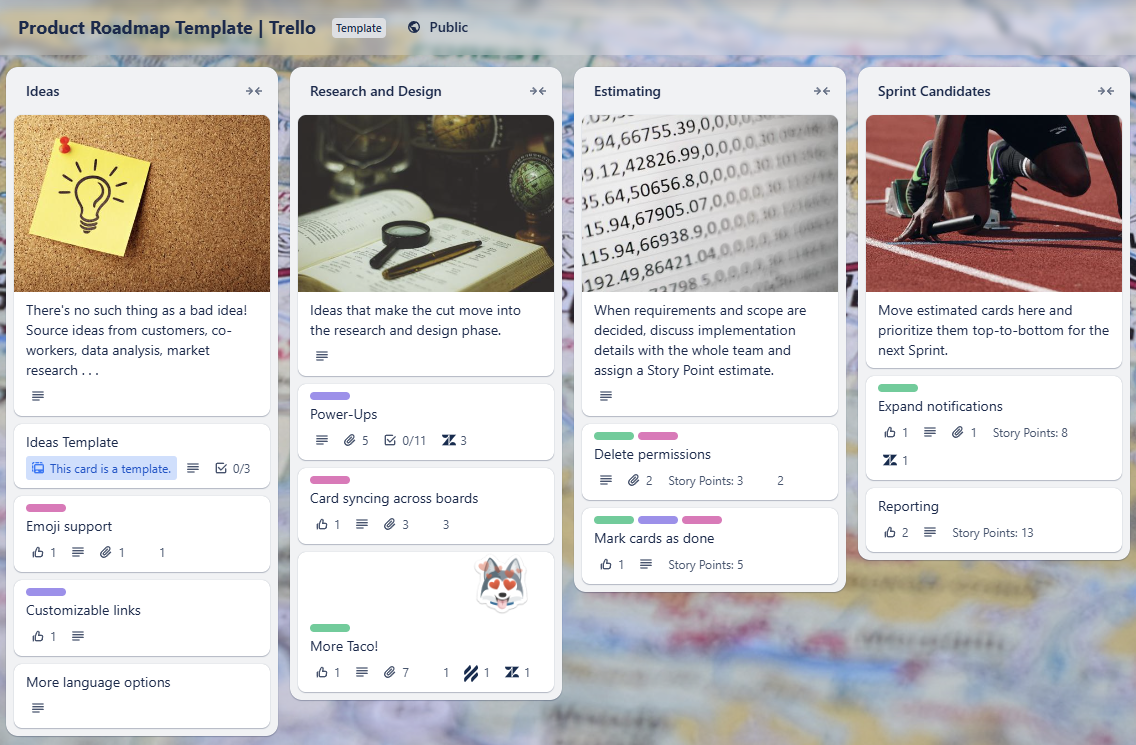Table of Contents
Start using Kanbanchi today
Start your free trial

Nothing slows down a sprint faster than a clunky project management tool (that nobody really likes to use anyway). But searching for an alternative? That can be just as, if not even more, frustrating.
You know you need all the features and integrations… but finding the right tool “on paper” doesn’t necessarily mean that it will be the right tool for your team actually doing the work.
Among the many options available, Kanbanchi stands out as one of the best project management tools for developers. Why? Because it’s already fully integrated with the Google Workspace ecosystem that millions of businesses and developers already use.
But there are other options, and it’s good to have an idea of what else is out there before you make a choice. So in this article, we’re exploring six of the top project management platforms for developers in 2025 (including Kanbanchi), comparing the different features, strengths, and use cases to help you find the perfect fit for your team.
Kanban boards are a tool that helps project managers and teams visualize exactly what needs to be done to complete a project from start to finish. They do this by providing a structured, visual framework for:
Kanban software (like Kanbanchi, Jira, or Trello) empowers teams to put this framework, which can be difficult to conceptualize, into real-life practice.
The look, feel, and features of Kanban software can vary, depending on the platform and the specific types of teams they’re built for. But generally speaking, all Kanban tools give teams the ability to create customizable, digital boards that can be adapted to different workflows, team sizes, and industries.
Visually, this often looks like:
These are the features that make a Kanban board a Kanban board. But beyond the essentials, modern Kanban software also often comes with additional features, such as chat and messaging functions, time tracking, and automation tools. Other more advanced features include third-party integrations, AI tools, and custom tracking dashboards.
To get all the functionalities and integrations from some of the best project management software for developers, you may have to pay a premium. But if you just want the basics, like the drag-and-drop cards and columns, it’s easy to find a free Kanban version that works for basic projects and tasks.
What project managers absolutely love about Kanban boards is the ability to have full control over the setup and framework.
However, you don’t have to completely reinvent the wheel each time you set up a Kanban board. There are well-established blueprints and templates you can use that can help you get going, and these templates reflect standard workflows and best practices.
For the software industry specifically, a typical Kanban board visualizes the software development workflow into the following three categories or “buckets”:
Organizing projects into these three categories helps break down complex development cycles into smaller tasks. For teams, this makes it much easier to plan sprints, track bugs, and manage backlogs.
In the long term, teams that commit to a Kanban system can stay better-aligned and respond to changes quickly.
If you’re managing a big team with complex deliverables, choosing the right Kanban-style software can make all the difference.
So say goodbye to chaotic, stressy sprints and hello to efficient sprints that deliver features, changes, and projects on time (and without the stress).
Read on for a full breakdown of the six top project management tools for software development projects that stand out in 2025, starting with Kanbanchi – the number one choice for teams using Google Workspace.
Kanbanchi is a project management and collaboration tool that was built specifically for teams that already use Google Workspace.

With Kanbanchi, you’ll have access to a range of intuitive Kanban boards and cards, Gantt charts, and time tracking tools. What really sets it apart, though, from other project management software is that it offers full integration with Google Workspace. This makes it the perfect choice for teams that rely heavily on Google’s business apps (i.e., Google Drive, Docs, Sheets, Calendar, Vault, etc.).
When it comes to the more advanced tools (like automations for complex web development projects), Kanbanchi has some limitations. That’s why it typically works best for small to medium-sized software development teams, startups, and digital agencies, especially those already using Google Workspace.
Kanbanchi has a 4.5 out of 5 rating on Capterra.
Kanbanchi offers a free trial for new users with no credit card required to sign up. After the free trial ends, all features are still available. However, free accounts are limited to only 36 cards.
Jira, by Atlassian, is a project management platform specifically built with software teams in mind. Jira is renowned for supporting Agile methodologies, allowing teams to manage the full software development lifecycle in a single location.
![]()
To get the most out of Jira, it’s important to have a solid understanding of Agile practices, as the platform works best when used by teams who have previous experience with iterative development, Scrum, and continuous improvement.
Jira tends to work best for teams with complex tracking requirements. Typically, this is medium, large, and enterprise-level software development teams that can dedicate the time and resources necessary to fully implement the platform.
Jira has a 4.4 out of 5 customer rating on Capterra.
Jira offers a basic free plan that can extend up to 10 users. Premium features are also available with a 7-day free trial.
Asana is a product management platform that places a strong emphasis on efficiency and goal-setting. With Asana, you’ll get a range of project planning tools, including Kanban boards, calendars, and Gantt charts. You can also automate workflows surrounding task assignments, status updates, and deadline reminders.

Asana is best-suited for small to medium-sized software development teams. Because it’s easier to use compared to more advanced platforms, it also works well for teams that collaborate with other departments, like marketing, product development, and operations.
Asana has a 4.5 out of 5 customer rating on Capterra.
Asana offers a free plan for smaller teams. Premium features are also available with a 30-day free trial, no credit card required.
Trello is another platform (like Jira) developed by Atlassian. But compared to Jira, Trello is much more intuitive and visually appealing. Think of it as Jira’s cousin, but a bit more fun (and way less intense).

The heart of Trello is its Kanban board system, which features a clean, drag-and-drop interface for visualizing workflows, roadmaps, and tasks. It’s simple and flexible, and easy to make it your own.
Trello tends to work best for smaller teams, freelancers, and non-technical users looking to add a little structure to their projects and workflows. While it does offer plenty of features and integrations, it’s not as advanced as other project management tools. For web development, it works best when managing simple and moderately complex projects.
Trello has a 4.4 out of 5 customer rating on Capterra.
Trello offers a free plan for up to 10 collaborators per workspace. There is also a 14-day free trial available for paid plans, which allow for more integrations and users.
ClickUp is an all-in-one project management platform designed to help centralize work. Although it can take some time to get used to, the ClickUp interface is relatively user-friendly.

In addition to the basics like Kanban-style boards and Gantt charts, ClickUp also provides advanced task tracking dashboards, native time tracking capabilities, and integrated chat and messaging tools.
ClickUp does take some time to learn and set up, so it’s best-suited for medium to large web development teams and agencies with dedicated project management support. It also works well for teams that need to control workflows and tasks at a granular level.
ClickUp has a 4.6 out of 5 customer rating on Capterra.
ClickUp offers a free plan, which provides access to basic features and up to five workspaces. Paid premium tiers are also available. However, there is no free trial for paid plans (only a 30-day money-back guarantee).
Wrike is an enterprise-grade project management tool designed to be used across departments and business functions.

With Wrike, you’ll find Kanban-style boards, flexible Gantt chart tools, and real-time activity streams. Wrike also offers a range of collaboration tools, such as shared dashboards, in-task commenting, and document versioning.
Because of its complexity, Wrike is best-suited for medium, large, and enterprise-level businesses that need advanced project planning, tracking, and reporting tools. In addition to software development, Wrike is also popular with product development, marketing, and design teams.
Wrike has a 4.4 out of 5 customer rating on Capterra.
Wrike offers a free (but limited) version that can work for smaller to medium-sized teams. Paid plans (which offer more advanced reporting, automation, and security features) are also available with a 14-day free trial.
For web development specifically, it’s all about finding a project management tool that can actually be implemented. You need a tool with all the productivity bells and whistles, but you also need to make sure it’s easy for your team to use.
With that in mind, here are four of the top project management tools that actually help web developers visualize projects, collaborate with each other, and stay connected with clients.
Trello is one of the first platforms to consider. It’s visually intuitive, and it’s easy for developers, external teams, and clients to see exactly what’s going on. Even though Trello is a bit more on the basic side, it still offers plenty of opportunities for customization. For example, you can create your own checklists, add attachments, and rearrange the drag-and-drop columns to create the exact dashboard you need.
Beyond its simplicity, Trello also offers extensive Power-Ups, which broaden the scope for how the platform can be used. For example, Trello integrates well with GitHub, Slack, Google drive, and various other tools. This flexibility makes Trello a great option for smaller teams, growing teams, and client-facing teams in need of simple, easy-to-understand visuals and processes.
Another tool worth considering is Asana, which allows you to visualize workflows and timelines. Asana also makes it easy to collaborate with team members and automate tasks, which can help ease some of the administrative burden.
Asana isn’t specifically built for developers, but it does offer practical features that help facilitate client feedback processes, browser testing, and lightweight UX approaches. This makes Asana a solid choice for web development agencies that collaborate with clients, as it brings much-needed structure without the complexity often found in more complex project management tools.
Another project management tool useful for web developers is Marker.io. This tool is super practical, as it allows clients to provide real-time feedback on live websites. Clients can take screenshots and record browsing sessions, and then submit their feedback straight to shared project boards with developers. Developers can then take on the feedback and implement it straightaway, avoiding the annoying back-and-forth feedback loops over email or in meetings.
Marker.io can also be integrated into other project management platforms, such as Trello, Asana, Jira, and ClickUp, making it the perfect sidekick to your project management tech stack.
For teams already using the Google Workspace ecosystem, Kanbanchi is a no-brainer. Kanbanchi was designed specifically to be used with Google Workspace, so it can easily be absorbed into your existing Google-based processes and workflows.
As a project management tool, Kanbanchi offers all the Kanban visuals and Gantt charts you’ll find in other platforms. But the key is its effortless integration across all Google apps, such as Gmail, Google Drive, Google Sheets, and Google Vault.
As technology only gets more complex and client expectations only get higher, it’s never been more important for software development teams to find a project management tool that actually does what it’s supposed to do: make work a bit less complicated (and life a bit easier).
If you’ve been tasked with choosing the best project management tool for your software development team, ask yourself the following questions before making your decision:
Knowing the answers to these questions will help you narrow down your options and make the very best decision for your team, projects, and business.
And if your team already collaborates well together using Google Workspace, Kanbanchi is definitely one to add to your list!
All software development teams are different, and the best project management tools for developers depend on facts like team size, workflow, processes, and third-party integrations.
Kanbanchi is an excellent choice for small to medium-sized teams that have already embraced Google Workspace. More advanced project management tools, like Jira, work better for larger teams and enterprise-level businesses with a larger scope and more advanced web development cycles.
Web developers often prefer to work with project management tools that have visual workflows and advanced tracking functionalities.
The most common project management tools include: Kanbanchi, Trello, Jira, and ClickUp. These platforms provide the structure web developers need, while also remaining adaptable and flexible to changing project requirements.
Kanbanchi is a more visual, user-friendly platform that’s fully integrated with Google Workspace. This makes it a better choice for teams already working in Gmail, Google Docs, Google Sheets, and Google Calendar.
Jira is a more complex platform designed specifically for Agile software development. This means it can support more sophisticated software development processes, such as backlog management, sprint planning, issue tracking, and release workflows.
Yes. Kanban boards support Agile web development processes, helping web developers manage backlogs, prioritize tasks, and track sprints. What makes Kanban boards so useful is how they help visualize workflows, so it’s easy to spot bottlenecks and work through backlogs.
Over time, teams that use Kanban boards benefit from improved communication and accountability.
Kanbanchi is the best tool for teams that work predominantly in Google Workspace. This is because Kanbanchi was specifically designed to be used with Google Workspace, and the platform offers full integration with current Google apps. This includes Google Drive, Google Sheets, Google Calendar, Google Vault, and Gmail.
When evaluating project management tools for software development, look for the specific features that will help their specific team work better. This differs from team to team, but the most common features web developers look for include Kanban views, sprint views, GitHub integration, and templates for bug tracking.
Table of Contents